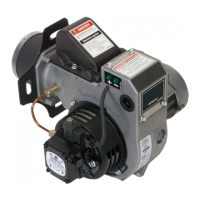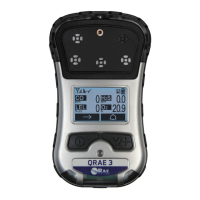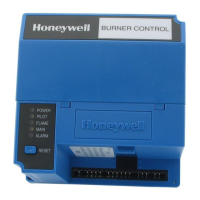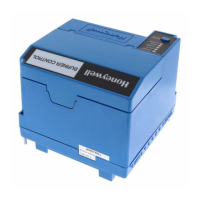16
Honeywell Titan SCBA, 20132
soon as the ll hose coupling engages into the RIC
UAC coupling on the SCBA.
5. Filling is complete when the pressure in the SCBA
cylinder and in the ll cylinder are equalized. This will
take place in approximately one minute.
NOTE
In most cases, the cylinder will not be lled to
full service pressure. The resulting service life
of the SCBA will be reduced.
6. Disconnect the ll hose coupling by pulling back on
the outer locking sleeve. An audible hissing or pop-
ping will be heard when the ll hose is disconnected.
When this occurs, coupling separation has been
achieved.
7. Replace the dust cover on the SCBA RIC UAC
coupling.
8. Close the cylinder valve on the ll system and vent
the air from the ll hose. Replace the dust cover on
the ll hose.
9. Replace or re ll the cylinder in the RIT Kit for future
use.
H. Emergency Operation
1. PROBLEM: Restricted or interrupted air ow
a. Open the bypass valve by turning the red knob
on the second stage regulator counterclockwise
until desired constant air ow is achieved.
WARNING
Activating the bypass valve will rapidly
deplete your air supply. Immediately exit
to a safe area. Failure to comply with this
warning may lead to personal injury, illness,
or death.
b. IMMEDIATELY exit to a safe area.
c. Have the SCBA inspected and/or repaired by a
Honeywell-certi ed repair technician before reuse.
2. PROBLEM: First-Breath-On failure
a. Press the manual override button on the front of
the regulator to start air ow.
b. IMMEDIATELY exit to a safe area.
c. Have the SCBA inspected and/or repaired by a
Honeywell-certi ed repair technician before reuse.
3. PROBLEM: Free ow
a. If the regulator will not shut off (free ow) during
extremely heavy breathing, exhale forcefully. The
regulator should return to normal ow.
b. If the free ow continues, open and close the
bypass once.
c. If the problem persists, IMMEDIATELY exit to a
safe area.
d. Have the SCBA inspected and/or repaired by a
Honeywell-certi ed repair technician before reuse.
4. PROBLEM: First stage overpressurization relief
valve operates
PRV is designed to vent air to atmosphere when
the ll pressure exceeds the service pressure of the
cylinder. The PRV will reset (close) at a pressure
below the service pressure of the SCBA. If a high
pressure (4500 psig) ll (supply) cylinder is used on a
2216 psig SCBA, the PRV may open and vent air to
atmosphere.
WARNING
• NEVER use the RIC UAC for routine fi lling
of SCBA cylinders. The RIC UAC is intended
to be used for cylinder fi lling during rescue
operations only.
• Never use the Honeywell RIC UAC to fi ll
an SCBA cylinder while the SCBA is being
worn unless there is a compelling reason
to assume the risk of injury if there is a
component failure during the fi ll process.
• Never use the Honeywell RIC UAC to fi ll an
SCBA air cylinder while the SCBA is being
worn if the SCBA or the cylinder is suspected
of having been dropped, exposed to direct
fl ame impingement, or damaged in any way.
• The purity of the RIC UAC air source
must meet the requirements set forth in the
Compressed Gas Association Commodity
Specifi cation for Air, G-7.1, Type 1, Grade
D, with a dewpoint not greater then -65°F
(-53.9°C), or less than 24 ppm by volume.
• The relief valve on the fi rst stage pressure
reducer is factory set. Tampering with
the relief valve may cause the SCBA to
malfunction or may result in a decrease in
service life.
• If at any time during fi lling, an air leak is
detected or suspected in the SCBA or the
fi ll system, disconnect the fi ll hose from
the SCBA. Close the cylinder valve on
the fi ll cylinder and vent the air from the
fi ll hose. Remove the SCBA from service
for inspection and repair by a Honeywell-
certifi ed technician before use.
• The dust covers on the RIC UAC coupling
and the RIC UAC fi ll hose must be installed
at all times unless the SCBA cylinder is
being fi lled via the RIC UAC.
• Failure to comply with this warning may
lead to personal injury, illness, or death.
NOTE
Air venting from the PRV is extremely loud.
1. Open the cylinder valve on the RIC UAC ll system
(supply cylinder). The ll hose is now pressurized.
2. Remove the dust cover from the RIC UAC ll hose.
3. Remove the dust cover from the RIC UAC coupling
on the SCBA.
4. Connect the ll hose to the RIC UAC coupling on
the SCBA. Push the female coupling on the ll hose
until a click is heard. The cylinder will start lling as
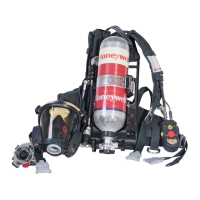
